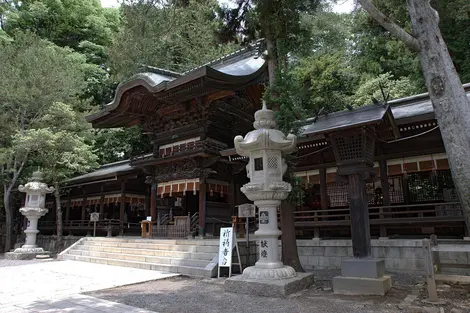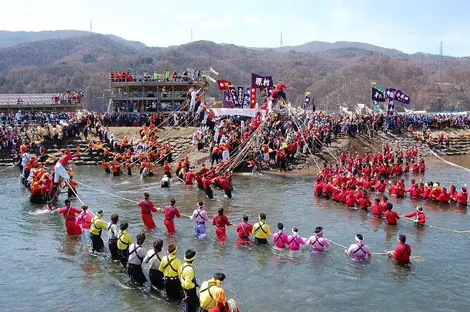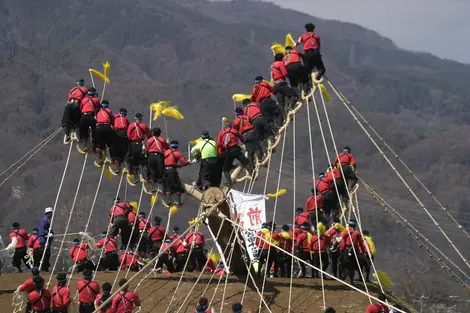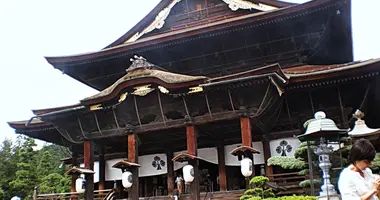Onbashira matsuri: Japan's most dangerous festival 御柱祭
- Published on : 18/04/2018
- by : I.D.O.
- Youtube
The showdown
Founded more than 1,200 years ago, Suwa-taisha, the "Suwa Grand Shrine", in Nagano Prefecture, is one of the oldest Shinto shrines in Japan. The Onbashira festival has been celebrated every six years for 1,200 years in order to symbolically rebuild the buildings of the Suwa-taisha by replacing the four "sacred pillars" (translation of Onbashira). It is a unique festival and reputed to be the most dangerous in the world. Get ready for 2022!
The celebrations span several months, with two main events , Yamadashi and Satobiki, taking place in April and May respectively.
Yamadashi
Yamadashi literally means "coming out of the mountains." This is the first part of this great festival. After a Shinto ceremony given in honor of the kami (deities) of the forest, men cut down sixteen fir trees 17 to 19 meters high, about one meter in diameter and weighing some 7.5 tons each. Their trunks once debarked will be transported to the city. And it is in the transport of these trees that lies all the interest but also the danger of this unique festival. Indeed, thousands of men will then ride the trunks and cling to them (ropes have been fixed to them) as they are made to descend a steep and uneven slope. It's for those who can hang on the longest, while most slip, fall and try to climb back on these huge trunks tumbling down the hill at high speed. This spectacular moment is called Kiotoshi (literally: "dropping the tree"). It is the highlight of the festival and was once a rite of passage for local young men to show off their bravery and strength. But once down the hill, the ordeal is far from over and participants take turns carrying the fir trees across a river and then weaving their way through narrow streets before taking them away. to their final destination, a place where they will be stored until the second part of the festival: Satobiki.
Satobiki
Less dangerous but just as colorful, this final ceremony takes place about a month after that of Yamadashi. It consists in transporting and parading the trunks which will be erected in the four corners of the four main buildings of the great sanctuary of Suwa. Participants will raise the huge pillars by hand , again demonstrating their strength. The whole city is celebrating: dances, music and songs accompany the participants.
Once arrived at the shrine, some protagonists lift and erect the trees while others climb on them and sing in sign of joy and victory. This ceremony is called Tate-Onbashira (literally, the "dressing of the pillars") and closes the two main stages of the Onbashira festival.
This part of the festival was replicated as part of the opening ceremonies of the 1998 Nagano Olympics.
To read: The Japanese Alps
A reputation not usurped
Onbashira is not wrongly dubbed the " most dangerous festival in the world ". There are many injuries and even deaths at each festival, even with the security measures taken since the last century. Some participants drowned while crossing the river, others had fatal falls.
Moreover, the prefecture of Nagano warns spectators, especially during Kiotoshi and strongly advises them to buy tickets to have seats on the benches installed for the occasion in order to attend the show in complete safety.
See also: Lake Suwa
Address, timetable & access
Address
Timetable
JR Chuo line Chino or Shimosuwa station

























